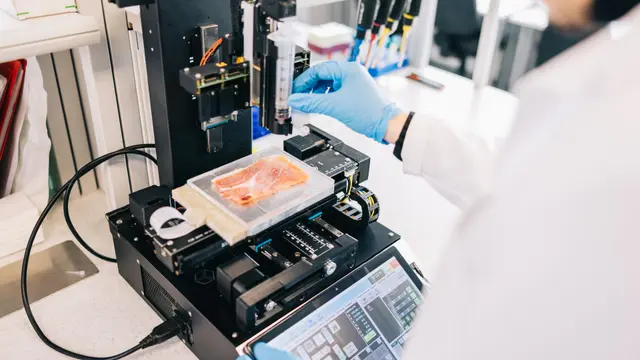The 3D food printer, developed by researchers from Hong Kong, uses infrared heating to contain bacterial formation and ensure food safety, while consuming just 14 watts of power.

Researchers at Hong Kong University of Science and Technology (HKUST) have developed a new 3D printer to make food layer by layer using graphene and artificial intelligence (AI). The 3D printer can create complex edible structures and features precision infrared heating to maximize product quality and safety.
This combination helps overcome some significant flaws with other existing automated food production techniques, including issues with food safety and the general need for technical expertise oversight. The former is a substantial concern as current 3D printers tend to create food in two significant steps.
The first involves extruding some cold food paste to make the item. This is then typically transferred to an oven or fryer for cooking and sterilization. While functional, this approach often results in deformed shapes and increased contamination risks as the food moves between machines. The new 3D printer, however, integrates these separate steps into one as it is capable of building and cooking the food simultaneously.
Precision and safety
The concurrent process of building and cooking is achieved using the 3D printer’s infrared heater made from laser-induced graphene (LIG). According to the researchers, this ultra-thin heating element provides precise temperature control, with food layers reaching 278.6°F (137°C) on the surface and maintaining at least 221°F (105°C) on the sides throughout the printing process.
The printer uses just 14 watts of power—a fraction of the 1,000-2,000 watts consumed by conventional ovens and air fryers. The team tested their new printer using a special starch-based cookie dough. As the printer extruded each new layer of dough, the infrared heater immediately cooked it.
The process also enables the food item to maintain its shape while destroying any harmful bacteria. As the team points out, immediate cooking prevents slumping and deformation when printed food items wait to be baked.
Analysis of the 3D printer showed that it has superior qualities to conventional cooking methods. Using a scanning electron microscope (SEM), the research team discovered that the infrared-cooked samples maintained consistent internal structure without the dramatic swelling in oven-baked items.
X-ray analysis also revealed that the final product had uniform porosity throughout the food, indicating thorough cooking without compromising structural integrity. Moreover, COMSOL simulations confirmed even heat distribution, showing that heat penetrated only 1-2 mm from the top layer, preventing overcooking of the lower layers.
Varied applications
From the point of view of food safety, the new technique showed impressive suppressions of bacterial growth after cooking. Conventional cooked food items tend to see substantial bacterial growth after just 48 hours.
However, the new infrared-treated items had only 0-6 bacterial colonies at 212°F (100°C), compared to over 200 in oven-baked and air-fried samples. This improvement stems from the immediate high-temperature treatment of each printed layer.
The team notes that the new technology’s implications extend beyond simple food printing. For example, combining AI design tools and integrated cooking capabilities opens possibilities for automated commercial food production.
The new 3D printing system’s energy efficiency and compact size also make it practical for restaurants and bakeries seeking to offer customized food items without extensive technical training.
The researchers also envision particular value in healthcare settings, where precise control over ingredients and portions is crucial. To this end, the technology could take over automated production of specialized diets while ensuring consistent quality and safety.


